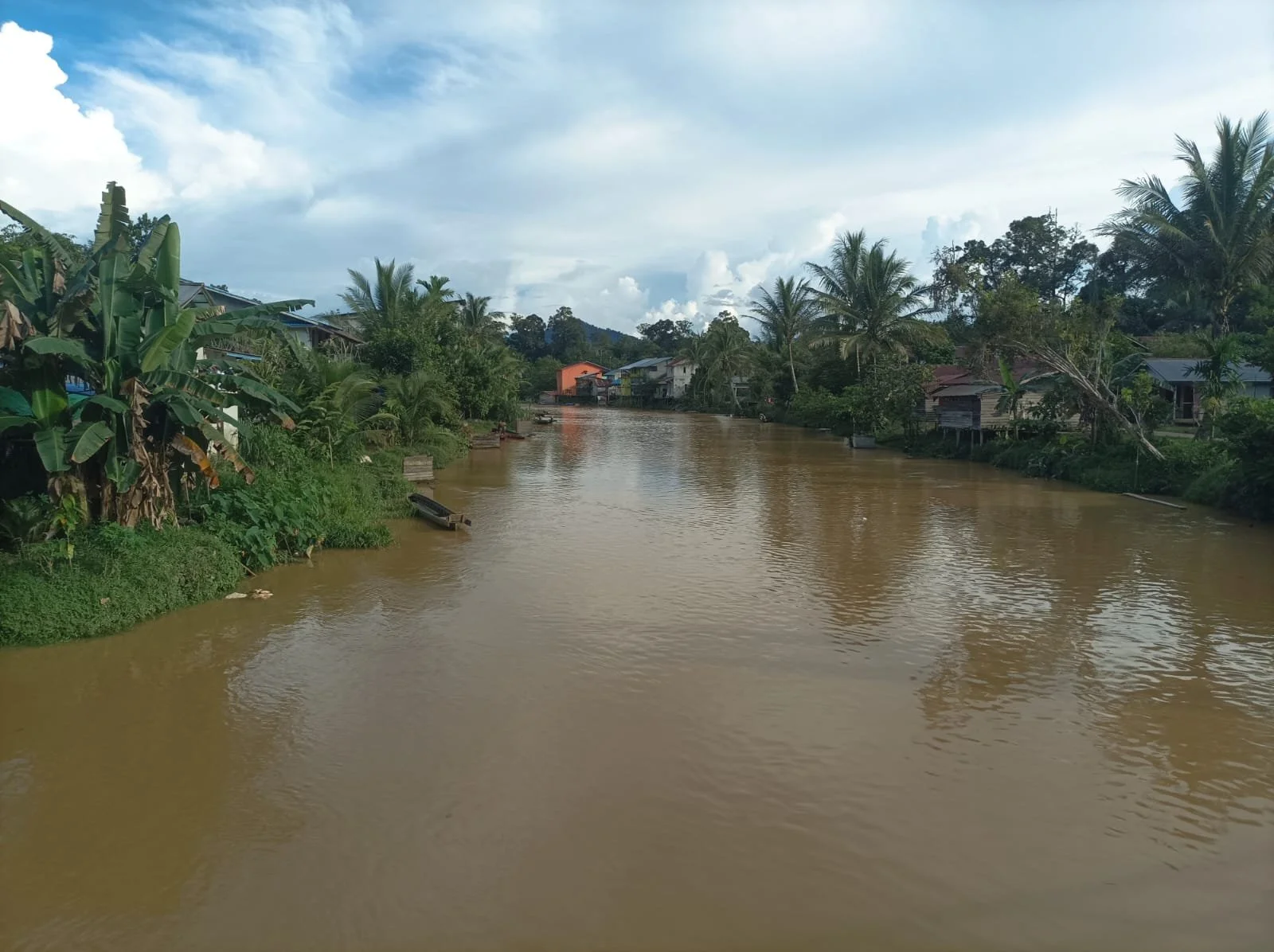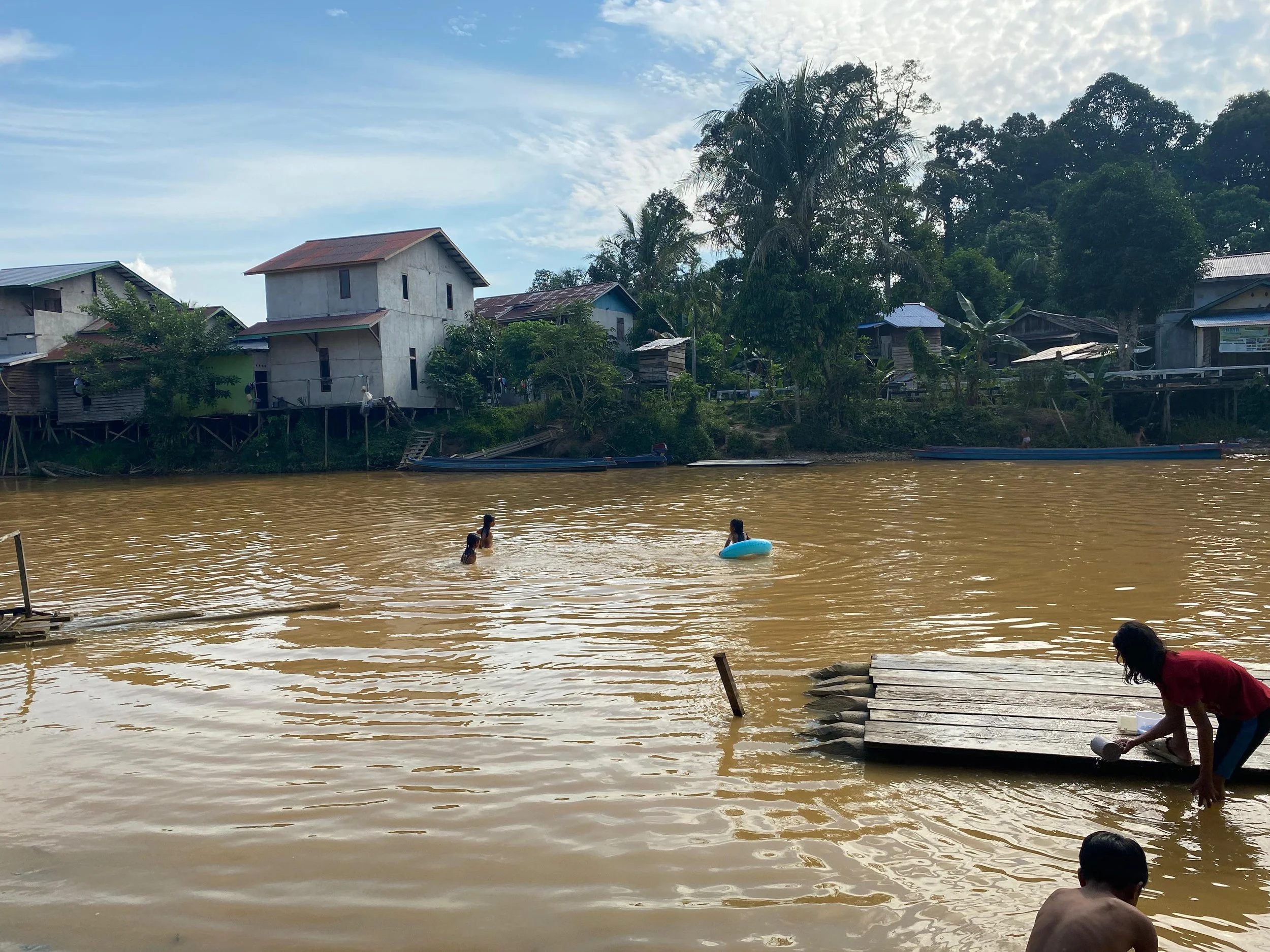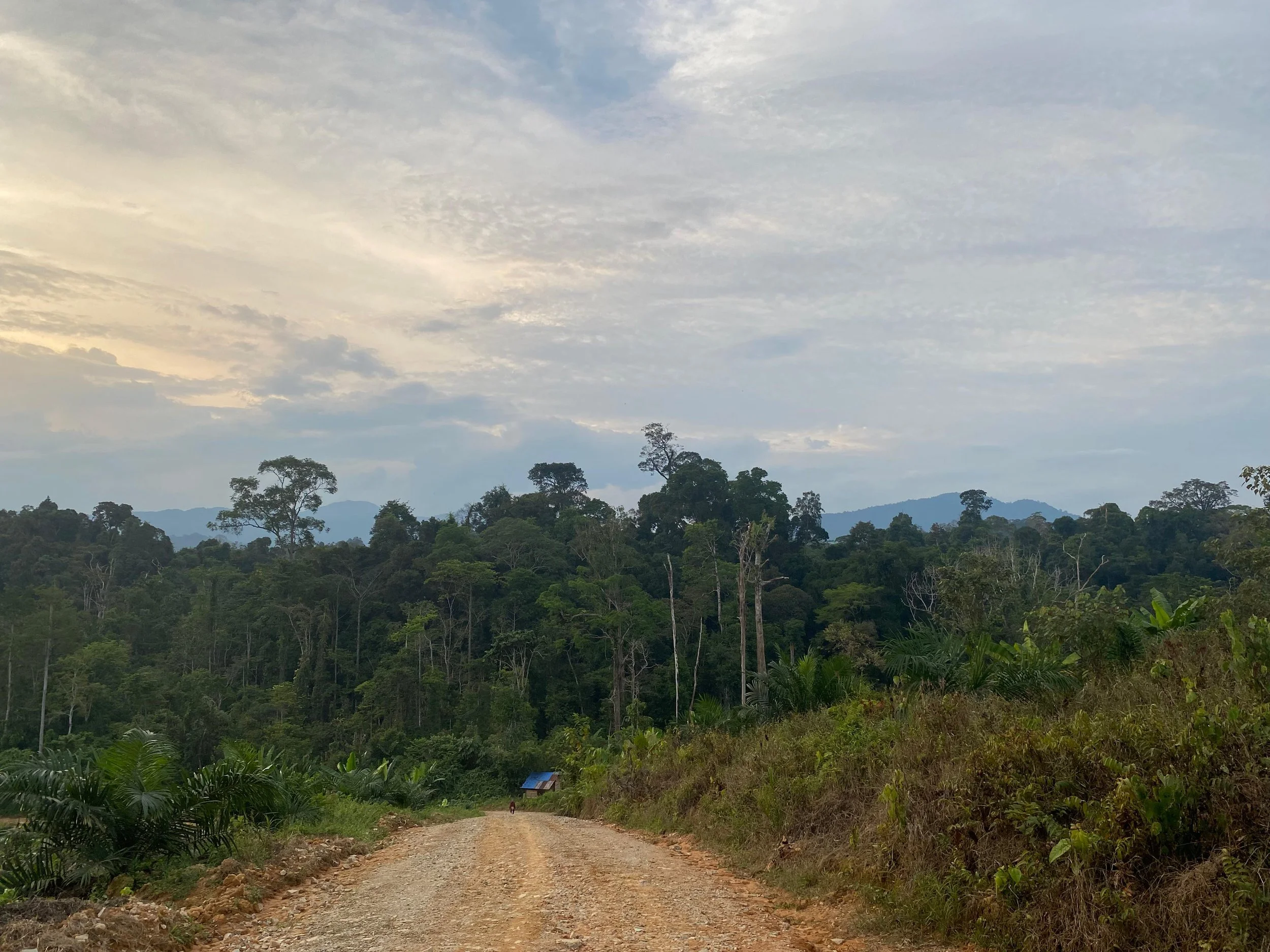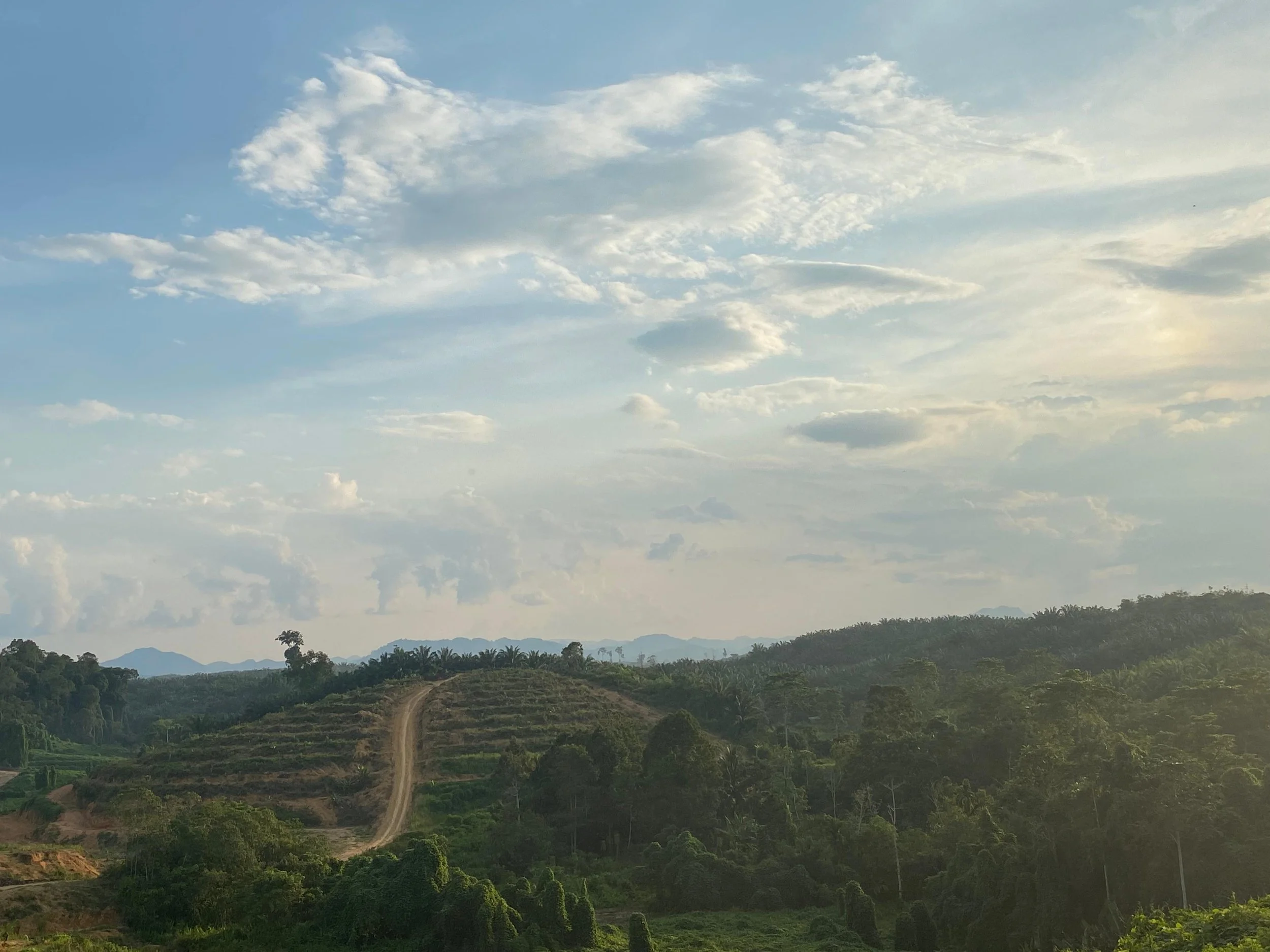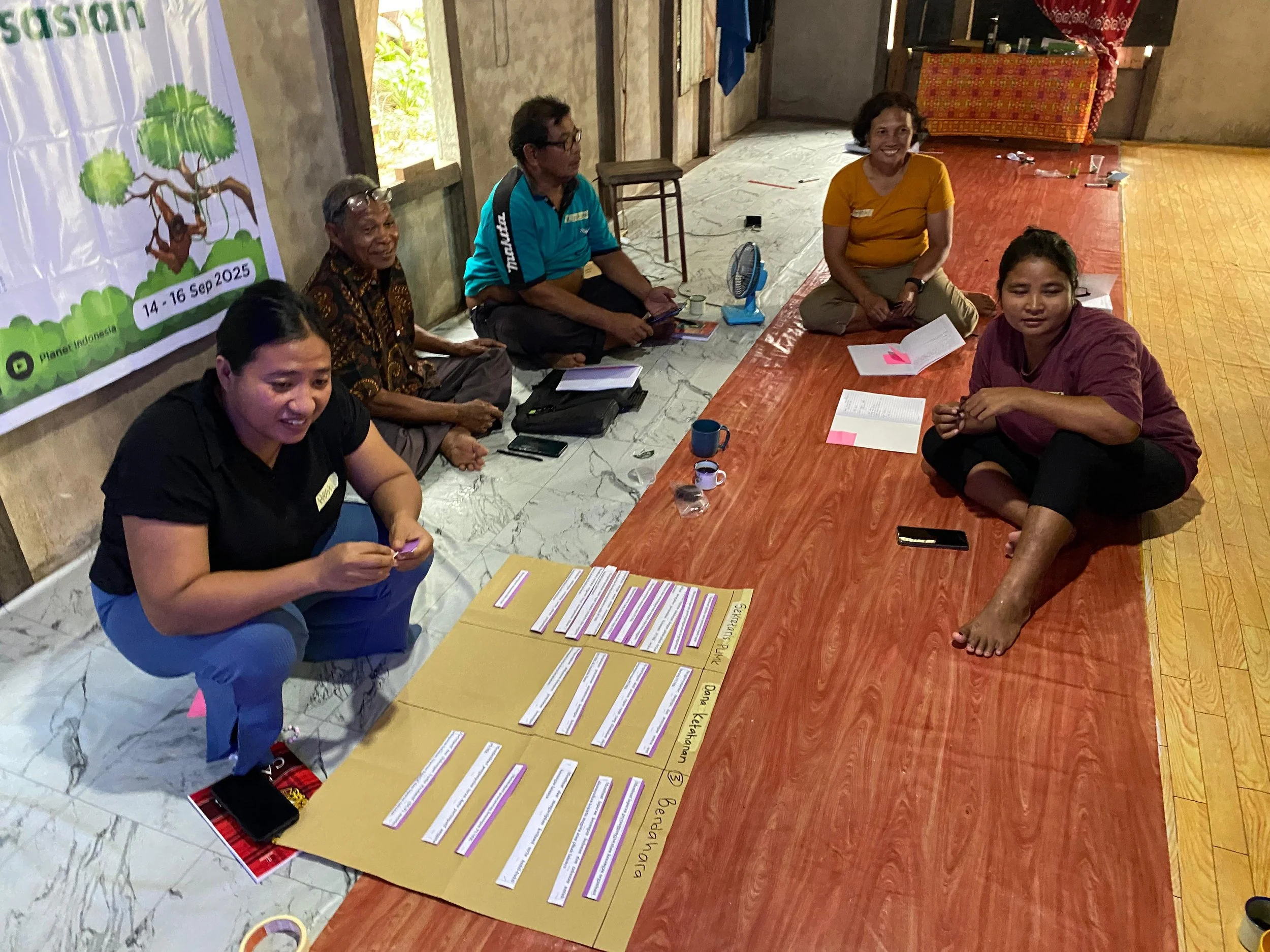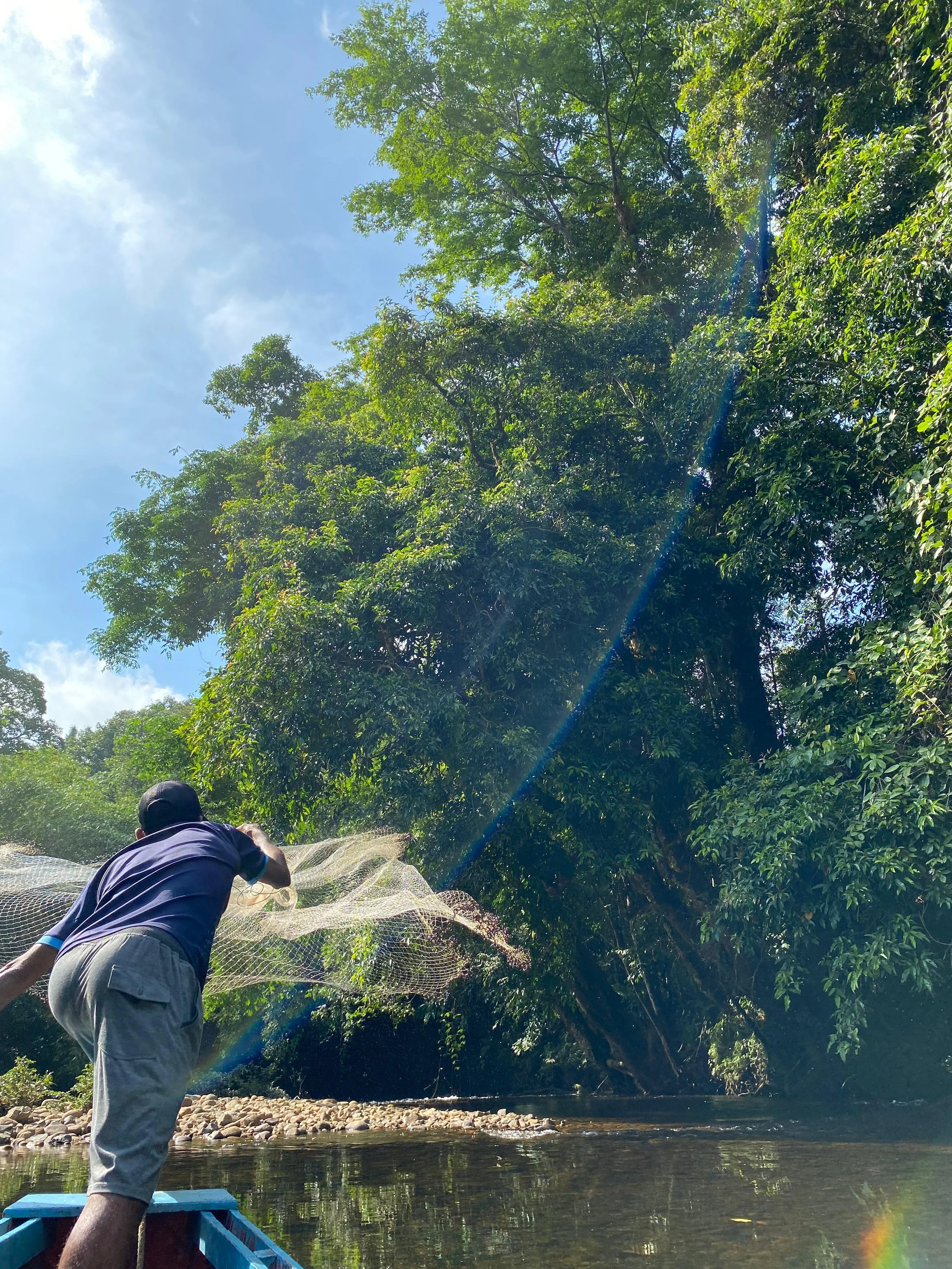Between Gold and Green: Communities in Melawi Fight for Their Future
By Dio Purnomo, Randi Wira Aji, Marselinus Jino
In the heart of Melawi, rivers once ran clear and forests stretched unbroken. Villages here live on the edge of these ecosystems, relying on them for food, water, and survival. But today, those same rivers carry mercury from illegal gold mining, and forests are giving way to expanding palm oil estates. In this part of Kalimantan, communities face a difficult balance: securing livelihoods without losing the land and water that sustain them.
Yet amid these pressures, hope is not absent. In village halls, along riverbanks, and in contested fields, people are building new forms of resilience. From collective governance groups discussing hard questions about land rights, to communities coordinating livelihood initiatives, the people of Melawi are weaving their own answer to the question: How can we thrive without destroying what we depend on?
Gold’s Glitter, River’s Despair
For generations, the Cina River (known locally as Sungai Cina) in Ganjang Village was the community’s lifeline. Its waters were clear, fish abundant, and children played along its banks. That changed in 2020 when illegal gold mining surged, bringing heavy machinery and mercury pollution. Mercury, often used in unregulated artisanal mining, seeps back into the water, contaminating the river that people depend on for daily life.
“One morning, we could still see small fish swimming at the river’s edge”, remembered Eki, a villager from Ganjang. “Now, fish are hard to find, and we don’t dare use the water for our daily needs.”
Arman, a village health worker, has seen the toll firsthand: “Some children have started to suffer skin diseases after bathing in the river.”
Yet mining brings income to a region where options are limited. With gold prices high, even half a gram mined in a day can earn more than weeks of farming. Families rely on it to pay school fees and cover daily needs, but at the cost of their river, their health, and their future.
The Fragile Ground Beneath
In nearby Togan Baru, the struggle is over land. Since 2012, a palm oil company has operated with unclear concession boundaries (known in Indonesia as Hak Guna Usaha, or land-use rights granted by the state). Many villagers, pressured by economic need, sold their plots for as little as $400 to $650 per hectare. What seemed like an opportunity soon turned into a loss: families gave up not just land, but also the security of their space to live and grow.
Efforts to clarify ownership failed in 2020, with much of the community’s land absorbed into company claims. “Part of the company’s concession even includes our farmland and public facilities like the church and the football field,” explained Rabudin, a resident of Tanjung Jati.
Promises of profit-sharing schemes (locally called plasma-inti) have also disappointed. Payments arrive only twice a year and are far below expectations. The result is division: some households tied to company contracts, others resisting, fueling tension and risk of conflict. Without secure rights or transparent governance, communities are left vulnerable and divided.
Weaving Hope Through Collective Governance
Despite these pressures, communities in Melawi are also taking their future into their own hands. In July, villagers of Togan Baru gathered in a modest hall to ask urgent questions: How can we improve our welfare without sacrificing the preservation of nature? How can we access healthcare without having to travel such long distances, when in truth, health is a right for every human being?
From those discussions, the community-led governance body Batu Badak was born. Batu Badak, translated as “Rhino Rock,” comes from a local legend of a rhinoceros-shaped stone by the Melawi River. The rock is seen as a symbol of wisdom, strength, and protection, qualities the community believes should guide their governance. With support from Planet Indonesia, it became a platform for charting a more balanced path forward.
Honorius Perawe, a village official and group member, shared: “I hope this initiative will encourage the economic independence of our village. We cannot only rely on government aid or outsiders; we need to create our own sources of sustainable income.”
For Togan Baru, Batu Badak is more than an institution. It is a collective pledge to build a future where prosperity and conservation stand side by side.
Seeds of Resilience
From the polluted river to contested land and the new village forum, the stories of Melawi show the difficult choices communities face, but also the determination with which they respond. Survival here often means walking a knife’s edge: between earning enough for today and protecting what will sustain tomorrow.
Illegal mining has left the Cina River scarred, yet families depend on it to send their children to school. Palm oil expansion has stripped away land and fractured communities, but people continue to demand clarity and fairness. And in a small hall in Togan Baru, villagers are proving that when they sit together and make decisions collectively, they can begin to chart a path that protects both their livelihoods and the environment.
This is where Planet Indonesia’s model comes alive: not in abstract ideas, but in the lived struggles of communities like those in Melawi. By supporting collective governance, securing rights, and creating alternatives to destructive livelihoods, the balance shifts slowly, unevenly, but decisively.
In Melawi, that balance is still fragile. But in the voices of those who refuse to choose between survival and sustainability, there are seeds of resilience. If nurtured, they will grow into something stronger: a future where rivers run clear again, land is secure, and communities can thrive without sacrificing the ecosystems they call home.
If you have any questions please reach out via admin@planetindonesia.org. Sign up for our newsletter and follow us on our social media Facebook here, Instagram here, and LinkedIn here to get timely updates on our activities, an insider’s look into the lives of front-line conservationists, and ongoing programs.


